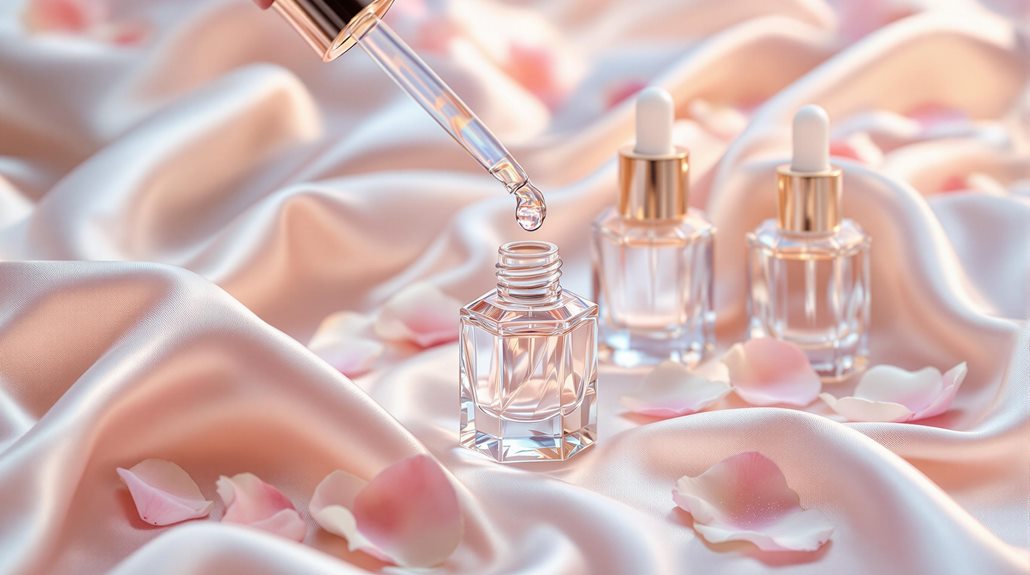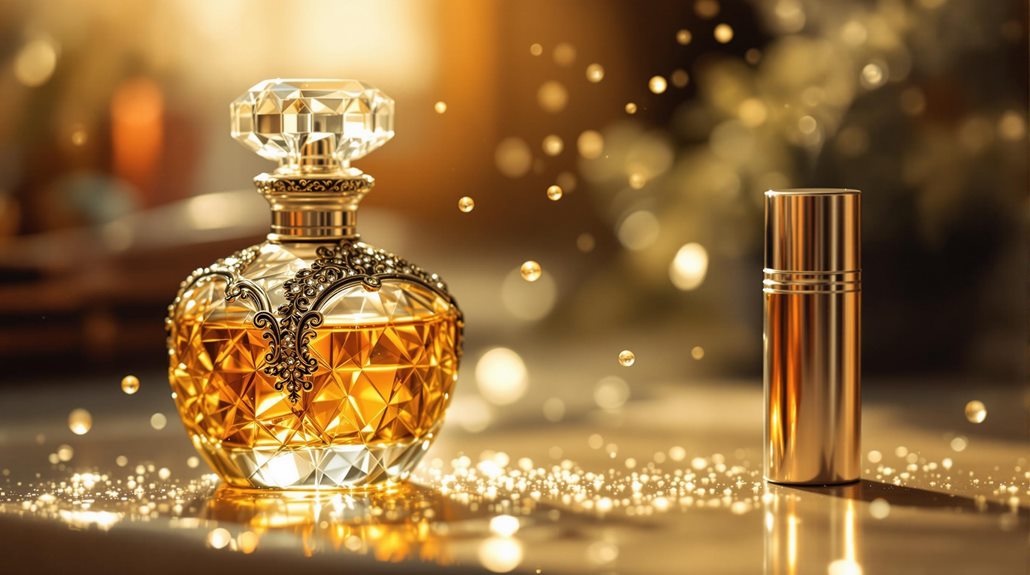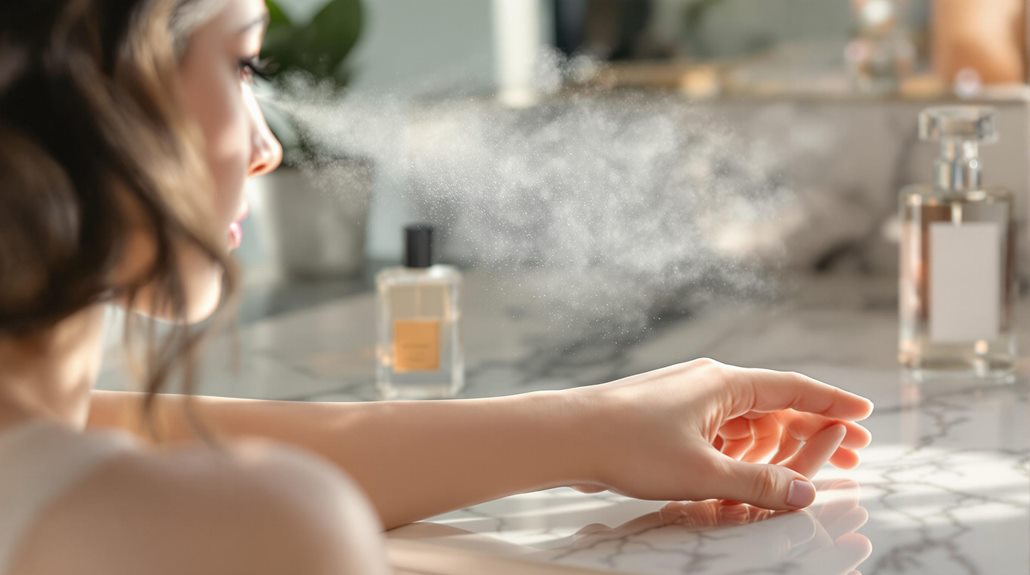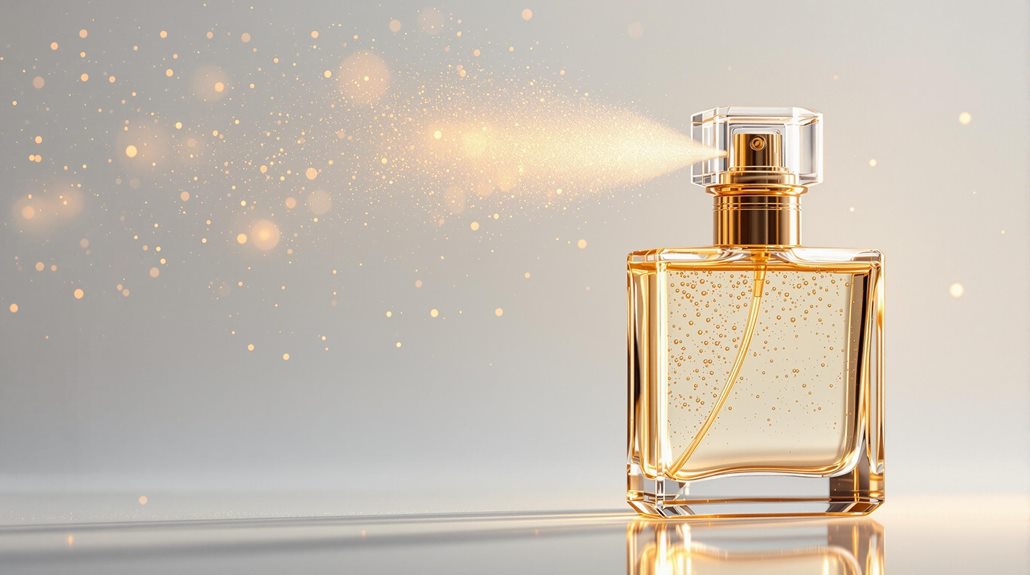DIY Perfume Oil: How to Make Your Own Long-Lasting Fragrance
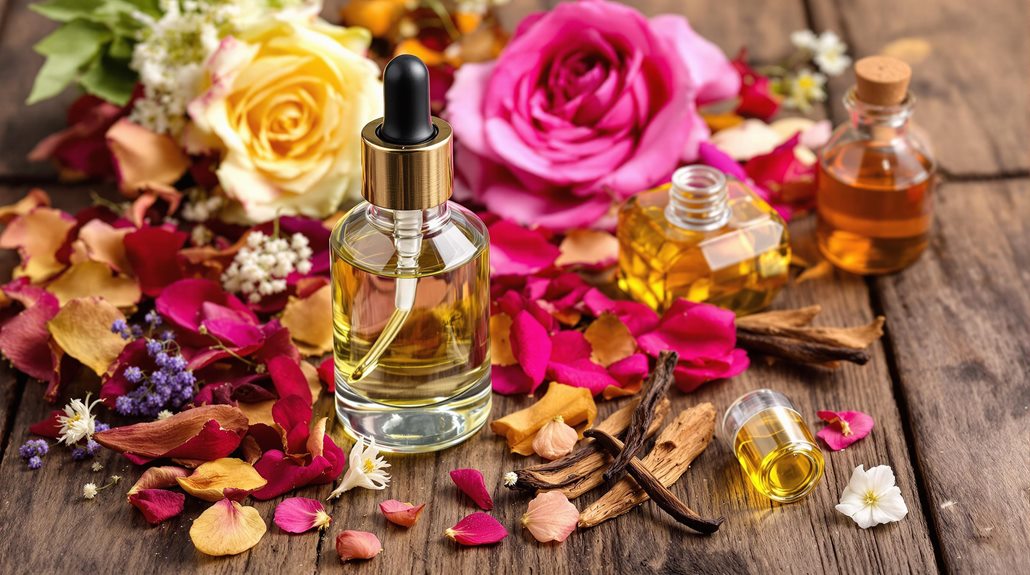
Making your own long-lasting perfume oil starts with selecting three essential oils that represent your desired top, middle, and base notes. You'll need a dark glass bottle, carrier oil, and precise measuring tools. Begin by adding two parts base note, one part middle note, and one part top note to create your signature blend. Mix with 80 drops of carrier oil, then let it mature in a cool, dark place for 1-3 months, shaking gently once per week. Adding vitamin E helps preserve your creation for up to two years. There's an artful science to crafting the perfect signature scent that unfolds beautifully over time.
Understanding Fragrance Notes
In the world of perfumery, every scent tells a story through three distinct layers of fragrance notes. When you're creating your own perfume oil, understanding these layers will help you craft a well-balanced and lasting fragrance using essential oils and fragrance oils.
Your scent expedition begins with head notes, which create the pivotal first impression. These lighter fragrances, often derived from citrus, herbs, or spicy essential oils, will evaporate quickly but set the tone for your perfume. The heart notes form the core of your creation, typically featuring floral scents like jasmine, rose, or lily that emerge as the head notes fade. These middle notes define your perfume's primary character and maintain its presence for several hours.
Base notes are your fragrance's foundation and anchor. When you're selecting fragrance oils for your base, focus on deeper, richer scents like sandalwood, vanilla, or musk. These heavier notes emerge last but persist the longest, sometimes lasting for several hours. By carefully balancing these three note types, you'll create a perfume oil that unfolds beautifully over time, revealing different aspects of its character throughout the day.
The Art of Enfleurage
Through the ages, enfleurage has stood out as a delicate art form for capturing nature's most fragile scents. This traditional method allows you to extract precious oils from delicate flowers like gardenias, lavender, lilies, and roses, preserving their subtle fragrances in a way that's gentle and effective.
To create your own enfleurage, you'll need to carefully crush flower petals and steep them in a carrier oil such as coconut, jojoba, or grapeseed oil. Once you've strained the initial infusion, you'll pour the scented oil over fresh petals multiple times to build a stronger concentration of fragrance. This process, while time-consuming, yields authentic botanical scents that you can't replicate synthetically.
To safeguard your enfleurage stays fresh, add Vitamin E as a natural preservative and store your creation in dark-colored bottles away from heat and light. You can use your finished enfleurage as a foundation for custom perfume blends or incorporate it into homemade beauty products. Whether you're making solid perfumes, body lotions, or sugar scrubs, your enfleurage will provide a pure, natural fragrance base that's uniquely yours.
Selecting Your Perfect Scent
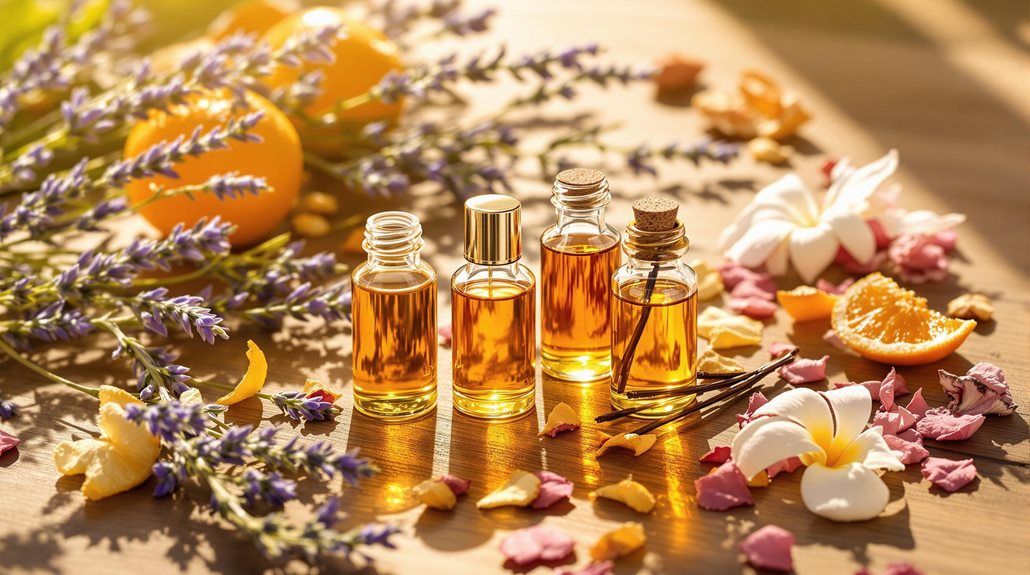
Creating your signature scent begins with understanding fragrance families and how they interact. When you make perfume, it's crucial to investigate different scent profiles to find combinations that resonate with your personal style. Consider whether you're drawn to woodsy aromas like cedarwood and sandalwood, or if you prefer the lightness of florals such as jasmine and rose.
The key to crafting your perfect fragrance lies in balancing different notes according to the fragrance pyramid. Start by selecting your base notes, which provide the foundation of your signature scent. Earthy elements like vetiver and musk work well here. Then, layer in heart notes, often comprised of floral essences, which form the core character of your perfume. Finally, add top notes using citrus oils like bergamot, grapefruit, or orange to create that initial burst of fragrance.
Don't be afraid to experiment with different combinations. You might uncover that a blend of woodsy base notes with floral heart notes and fruity top notes creates exactly the unique fragrance you've been seeking. Keep track of your preferred combinations to refine your perfect scent profile.
Essential Tools and Materials
Getting started with perfume-making requires just a handful of essential tools and materials. You'll need to gather specific items that guarantee your perfume oil turns out perfectly every time. The most important components include a 5ml bottle equipped with either a roll-on ball or dropper for easy application, and a carrier oil like Sweet Almond Oil or jojoba oil that serves as your base.
To create your signature perfume oil, make sure you have these critical items ready:
- A set of glass containers: Your main 5ml bottle for the final product, plus any mixing vessels you might need during the creation process
- Precise measuring tools: Pipettes or glass droppers to accurately measure and combine your chosen essential or fragrance oils
- Mixing essentials: Three different essential or fragrance oils of your choice, plus your selected carrier oil for dilution
Don't forget to include labels or tags in your toolkit - they're essential for keeping track of your perfume oil creations and their ingredients. Having all these materials organized before you begin will make the perfume-making process smooth and enjoyable.
Blending Your Signature Oil
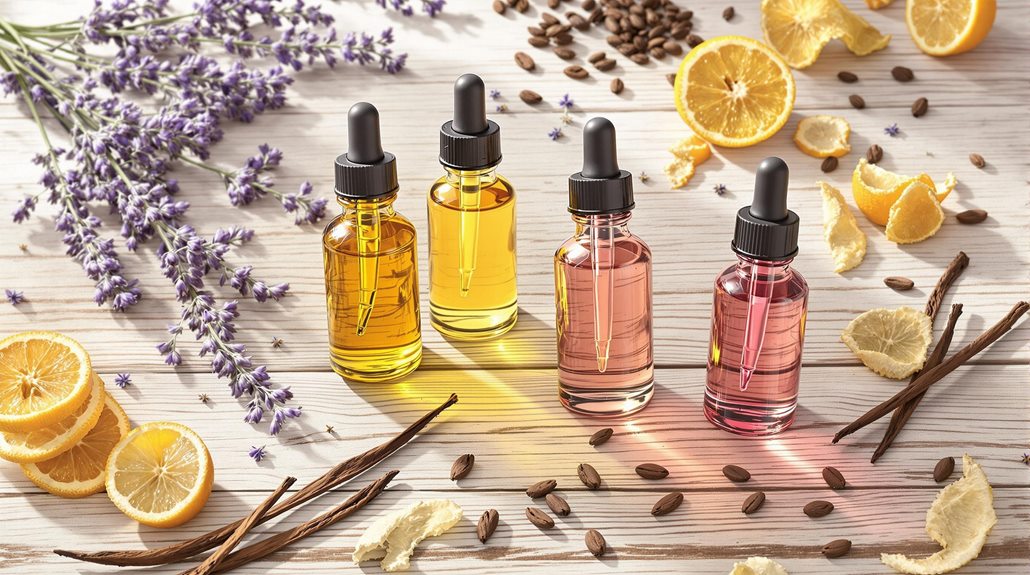
With your tools and materials ready, it's time to command the art of blending your signature perfume oil. Start by measuring out two parts of your chosen base note, which forms the foundation of your fragrance. Woodsy scents like sandalwood or warm vanilla work exceptionally well as your perfume's anchor.
Next, add one part of your heart notes to the mixture. These middle notes, typically floral scents such as jasmine or rose, create the essence of your perfume's character and bridge the gap between base and top notes. Complete your blend by incorporating one part of your selected head note - usually a crisp citrus like grapefruit or bergamot - which delivers the initial burst of fragrance.
Let your oil mixture rest for a week, allowing the scents to harmonize naturally. After this initial period, add 80 drops of your preferred carrier oil, such as jojoba or sweet almond. The final step requires patience: let your perfume mature for one month. Don't forget to mark the "Born On" date on your bottle - this helps you track when your fragrance is at its peak freshness.
The Aging Process
Patience plays an indispensable role in crafting the perfect perfume oil. When you make your signature scent, you'll need to let it age for at least one month to achieve the best results. During this time, your fragrance will undergo a transformation as the notes blend and meld together, creating a more sophisticated and complex aroma.
To guarantee optimal aging of your perfume oil:
- Store your blend in a dark place, like a cabinet or drawer, to protect it from light exposure and prevent oxidation that could alter the scent
- Gently shake the bottle once per week to encourage the notes to integrate fully and develop their intended character
- Wait between 1-3 months before using your perfume to allow the fragrance to reach its peak potential
The aging process isn't just about waiting - it's about allowing your perfume to mature and intensify naturally. Without alcohol in the formula, your oil can become up to 20% more concentrated during this period. This deliberate approach will reward you with a longer-lasting, more layered fragrance that's worth the wait.
Storage and Shelf Life
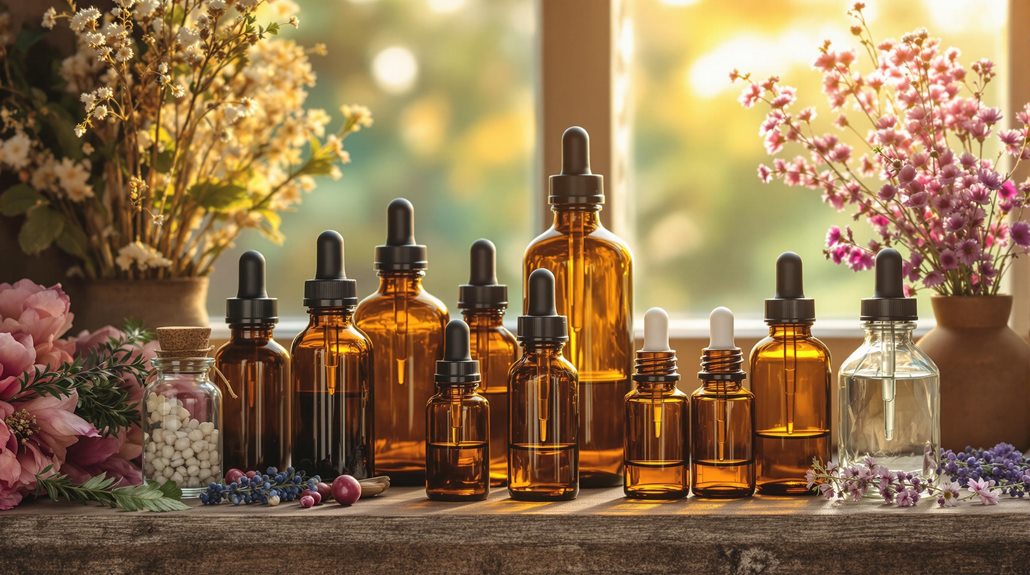
Three key factors determine how long your homemade perfume oil will last: proper storage conditions, ingredient quality, and preventive measures. When stored correctly, your DIY perfume oils can maintain their potency for up to two years, making them a practical alternative to commercial fragrances that you can layer with your favorite body lotion or apply directly to dry skin.
To maximize shelf life, store your perfume oils in dark-colored, airtight bottles away from heat, light, and air exposure. These elements can trigger oxidation, which degrades the fragrance and reduces its effectiveness. Consider keeping your perfume oils in a cool, dark cabinet or drawer. If you'd like to extend their life even further, you can store them in the refrigerator, but remember to let them warm to room temperature before application.
Adding vitamin E to your perfume oil formula acts as a natural preservative, helping prevent oxidation and maintaining the oil's integrity. By following these storage guidelines and incorporating protective ingredients, you'll safeguard your homemade perfume oils, ensuring they remain fresh and fragrant throughout their expected shelf life.
Customizing Your Fragrance
Creating your signature scent offers endless possibilities through the art of fragrance layering. When customizing your PERFUME oil blend, you'll want to experiment with different notes until you find the perfect combination that reflects your personality and style. Start with small batches and make sure to document your measurements for future reference.
To create a well-balanced fragrance, consider these essential layering principles:
- Begin with base notes like vanilla, sandalwood, or patchouli, which provide the foundation and lasting power to your blend. Add 15-20 drops of these oils to your carrier oil.
- Follow with middle notes such as lavender, rose, or ylang-ylang, which form the heart of your PERFUME. Add 10-15 drops of these oils to create depth and character.
- Finish with top notes like citrus, mint, or bergamot, which deliver the initial impression. Use 5-10 drops of these lighter scents to brighten your creation.
Remember to let your blend mature for at least 48 hours before making adjustments. This waiting period allows the oils to properly merge and develop their true character. Make sure to test your creation on your skin, as body chemistry can affect how the fragrance evolves.
Conclusion
You'll find that creating your own perfume oil is both rewarding and personal. With practice, you'll become proficient in the art of blending notes and develop unique fragrances that truly represent you. Remember to store your creations properly in dark glass bottles and give them time to age. Whether you're making perfume for yourself or as gifts, you've now got the knowledge to craft beautiful, long-lasting scents.

